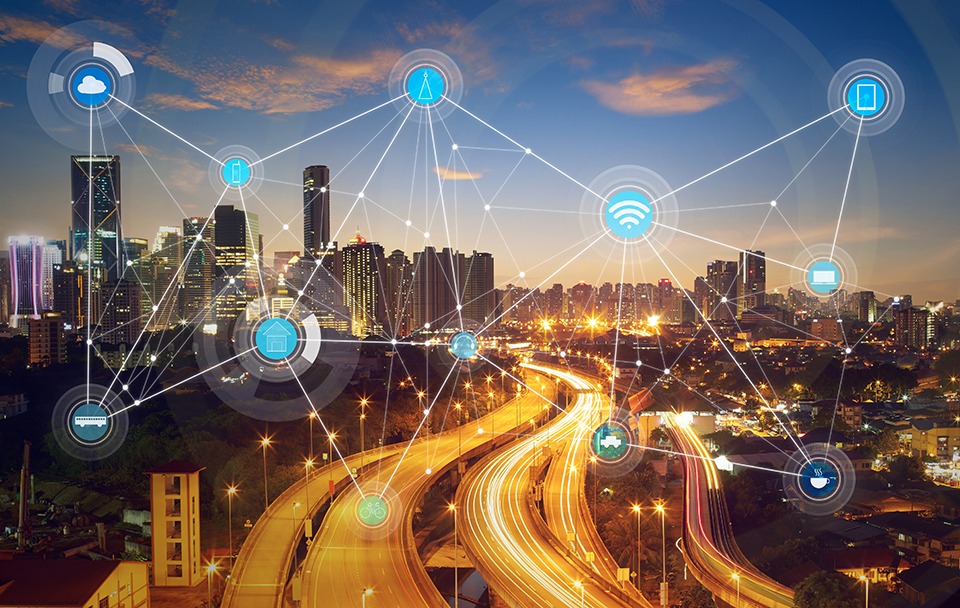“By 2020, there will be…” How many times have you read that intro? For countless industry analysts, the year 2020 has been held up as a critical turning point in reports and surveys about the adoption of Internet of Things (IoT) technology – partly because it sounds cool, but also because many of underlying technologies supporting IoT are projected to reach a critical mass in the months ahead.
2019: The year the Internet of Things began to grow up
Evidence that IoT is reaching maturity was everywhere at the Consumer Electronics Show (CES) in Las Vegas this January, where the emphasis was squarely on interoperability. No longer are IoT vendors seeking to lock consumers into single-brand ecosystems.
A wide range of IoT devices at CES, like the smart lighting by GE and smart TVs from Samsung now work with multiple voice interfaces, so that Google Assistant, Amazon’s Alexa and Apple’s Siri can operate the same devices. Opening up access like this has made the Internet of Things more practical and consumer-friendly, triggering the next wave of adoption. Integrating in a few well-developed voice assistants into smart home devices has proven to be much more productive than trying to build dedicated devices, each with its own unique interface.
Alternative interfaces for complex tasks
At the same time, voice isn’t everything. CES introduced device clusters where the user can change many variables at once using a visual interface, like the touch-sensitive, LED light display from Mui. Consumers can see lighting, temperature and music controls projected onto a piece of wood that fits in with their décor. They can adjust all at the same time with a few finger swipes.
Here’s an overview of some of the other major IoT trends to watch in the months leading up to 2020.
B2B and the consumer market: IoT means business
The consumer market for IoT devices in smart homes and connected cars is not the big story anymore. Forrester predicted that 85 percent of the companies they surveyed have plans to implement IoT solutions in 2019. That implies that industry applications IoT in healthcare, manufacturing, retail, and utilities will become the new normal.
Millimeter wave sensors: Large demand for the very small
IoT sensors are shrinking and using narrower band of the spectrum, between 30 and 300 gigahertz. That means that IoT can now go more places while reducing interference with WiFi and cellular signals. Examples on display at CES included millimeter wave (mmWave) sensors by Texas Instruments that combine an extremely small size with commercial grade accuracy. These sensors open up many new possibilities for connecting industrial devices in automotive production, robotics in general, and security.
Faster downloads with fewer interruptions: Heightened anticipation for 5G
Although many analysts in telecom hoped 5G would start rolling out before 2020, developers are still working to nail down the next generation of connectivity for mobile devices. Verizon, AT&T, and Sprint all presented demos of 5G-ready devices, prepared to transfer data at gigabyte speeds at least 10 times faster than existing speeds. 5G also brings lower latency, so critical services like medical devices can operate without the danger of interrupted connectivity.
The combination of AI with IoT: Machine learning accelerates
Several of the biggest tech companies at CES highlighted the merger of AI with IoT processors to make smart devices even better at predicting what we want. Car makers like BMW and electronics OEMs like LG joined forces with Microsoft’s AI initiative to help connected cars understand owner preferences. On the healthcare front, GTX combined IoT sensors with AI predictive analytics to make smart shoes that can predict and prevent older people from falling. Biomechanical evaluation of foot position can detect when a spill is likely and alert the user before their fragile systems take damage.
Predictions for what IoT will look like in 2030
Now that 2020 is nearly history, analysts are looking ahead to what IoT is likely to achieve in the next decade.
From around 31 billion connected devices in 2020, IoT is expected to spread out to 125 billion devices by 2030, according to IHS. While nine out of 10 US adults already own at least one smartphone, the market for connecting everything else is far from saturated. After homes and cars, the most likely places the Internet of Things will go next is into deeper into city infrastructure, wearable healthcare monitors, and sensors inside retail packaging.
An aging population, increasingly concentrated in urban zones with smaller household sizes, will need greater connectivity, according to McKinsey’s projections for IoT leading up to 2030. They estimated the market size will exceed $3.7 billion, with IoT for security in governmental and social services applications among the hottest growth sectors.
If history teaches us anything about predictions, it is that we generally think too small. The mobile revolution that started with cloud-based app-enabled smartphones in 2008 has changed everything about that we lived and worked over the past decade. In the aftermath of IoT’s rapid expansion into homes and business processes in 2019, you can expect a similar disruptive break in the way people organize their lives for 2020 and beyond.



